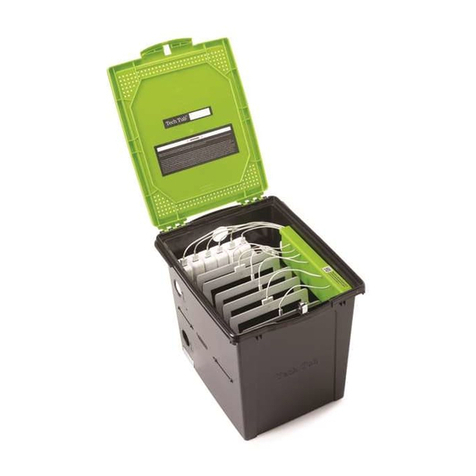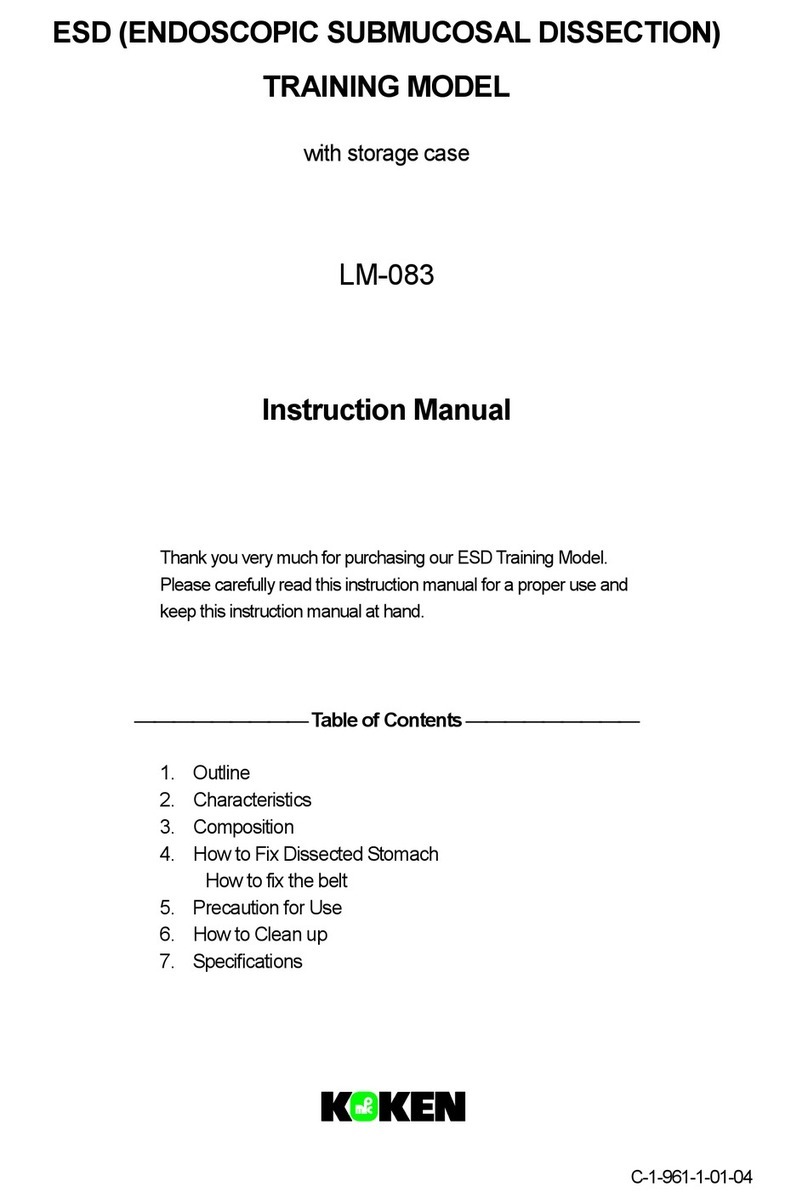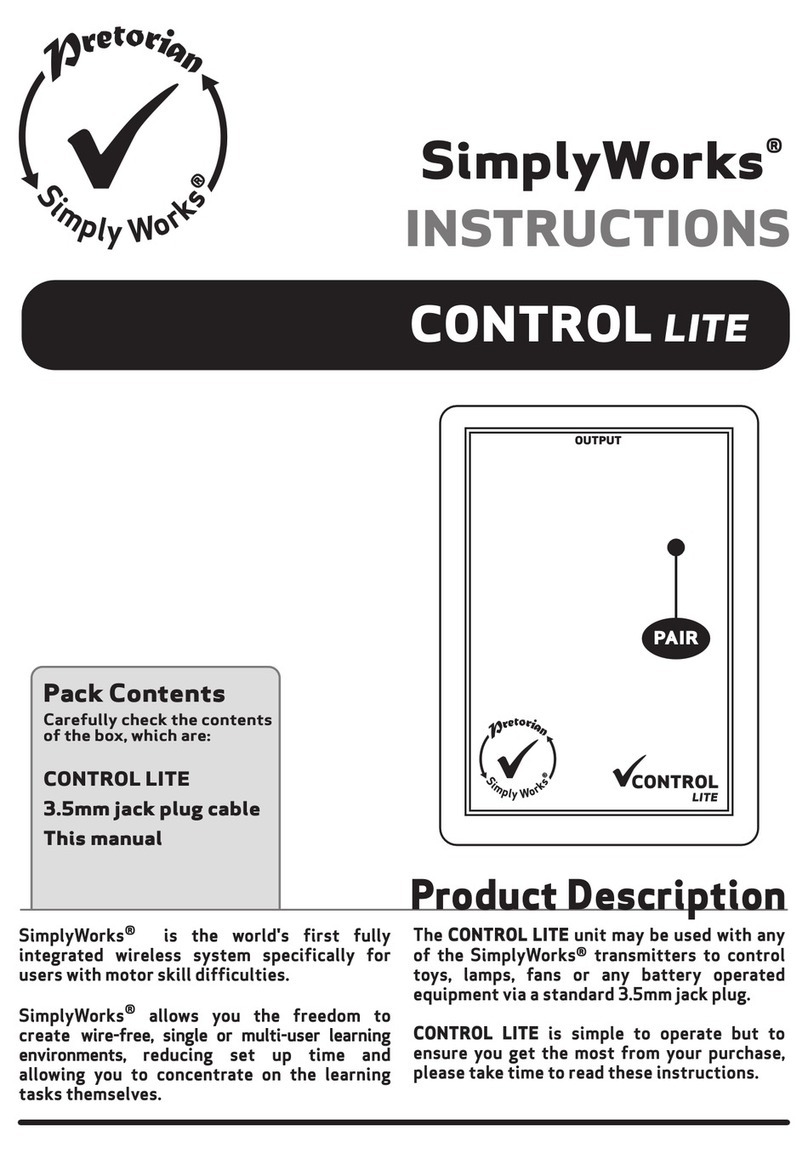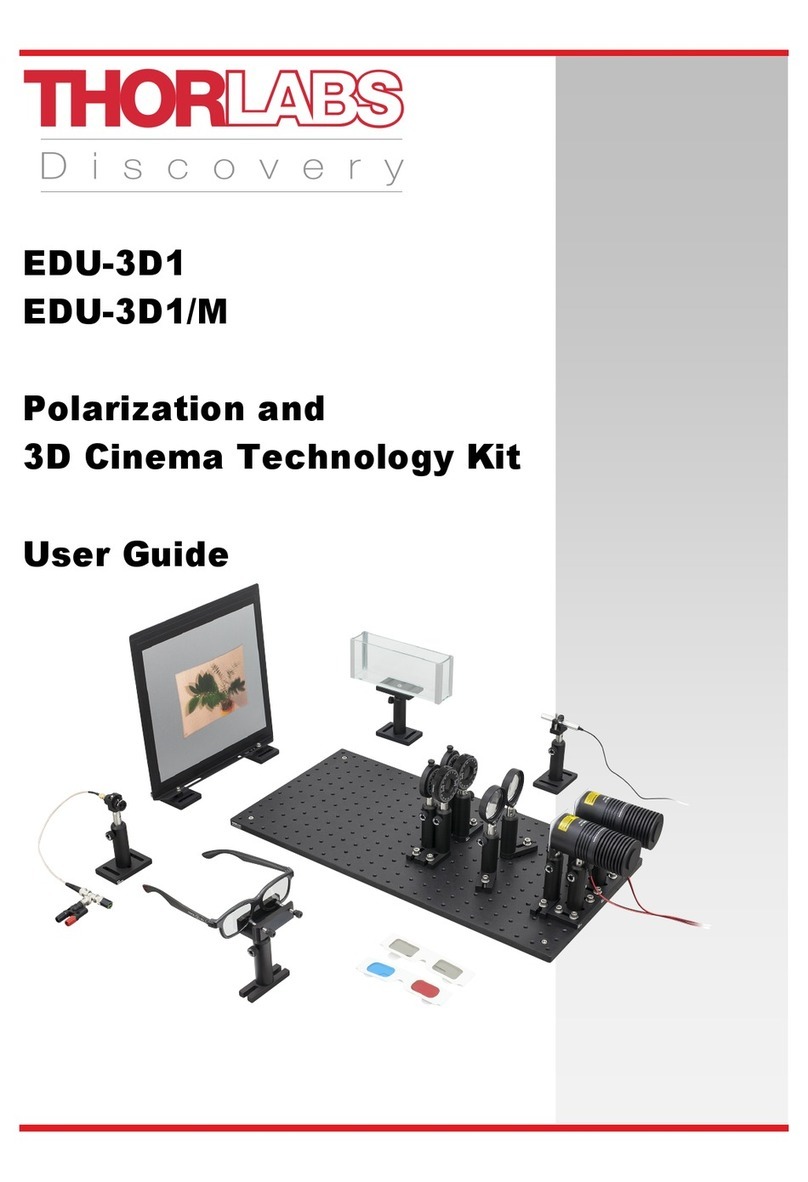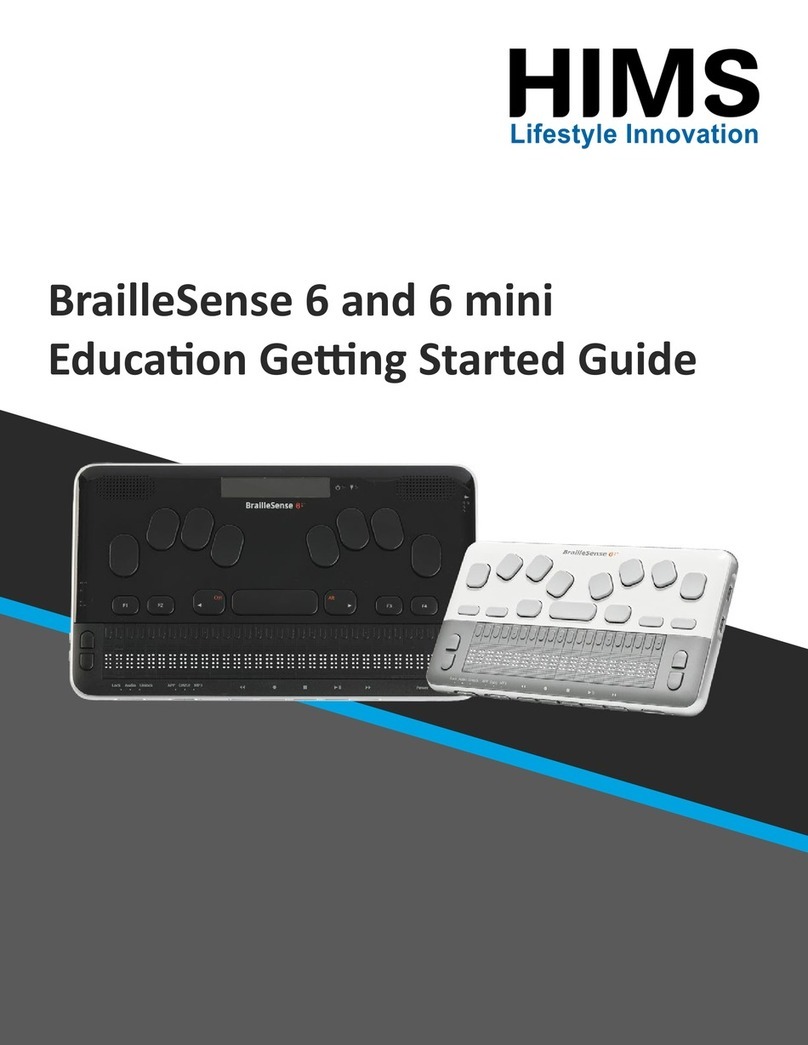Logic HDBaseT Educational Kit User manual

HDBaseT Educational Kit
www.logicav.in
Preface
Read this user manual carefully before using this product. Pictures shown in this manual is
for reference only, different model and specifications are subject to real product.
This manual is only for operation instruction only, not for any maintenance usage. The
functions described in this version are updated till February 2021. To improve our product,
we reserve the right to make changes the functions or parameters without notice or
obligation. Please refer to LOGIC for the latest details.
Trademarks
Product model and logo are trademarks. Any other trademarks mentioned in this manual
are acknowledged as the properties of the trademark owner. No part of this publication
may be copied or reproduced without the prior written consent.
FCC Statement
This equipment generates, uses, and can radiate radio frequency energy and, if not
installed and used in accordance with the instructions, may cause harmful interference to
radio communications. It has been tested and found to comply with the limits for a Class A
digital device, pursuant to part 15 of the FCC Rules. These limits are designed to provide
reasonable protection against harmful interference in a commercial installation.
Operation of this equipment in a residential area is likely to cause interference, in which
case the user at their own expense will be required to take whatever measures may be
necessary to correct the interference.
Any changes or modifications not expressly approved by the manufacture would void the
user’s authority to operate the equipment.

HDBaseT Educational Kit
www.logicav.in
SAFETY PRECAUTIONS
To insure the best from the product, please read all instructions carefully before using the
device. Save this manual for further reference.
▪Unpack the equipment carefully and save the original box and packing material
for possible future shipment.
▪Follow basic safety precautions to reduce the risk of fire, electrical shock, and
injury to persons.
▪Do not dismantle the housing or modify the module. It may result in electrical
shock or burn.
▪Using supplies or parts not meeting the products’ specifications may cause
damage, deterioration, or malfunction.
▪Refer all servicing to qualified service personnel.
▪To prevent fire or shock hazard, do not expose the unit to rain, moisture or install
this product near water.
▪Do not put any heavy items on the extension cable in case of extrusion.
▪Do not remove the housing of the device as opening or removing housing may
expose you to dangerous voltage or other hazards.
▪Install the device in a place with fine ventilation to avoid damage caused by
overheat.
▪Keep the module away from liquids.
▪Spillage into the housing may result in fire, electrical shock, or equipment
damage. If an object or liquid falls or spills on to the housing, unplug the module
immediately.
▪Do not twist or pull by force ends of the optical cable. It may cause malfunction.
▪Do not use liquid or aerosol cleaners to clean this unit. Always unplug the power
to the device before cleaning.
▪Unplug the power cord when left unused for a long period of time.
▪Information on disposal for scrapped devices: Do not burn or mix with general
household waste, please treat them as normal electrical wastes.

HDBaseT Educational Kit
www.logicav.in
Table of Contents
1. Introduction........................................................................................................................................................................................1
1.1 Brief Introduction.............................................................................................................................................................1
1.2 Features..................................................................................................................................................................................1
1.3 Package List.........................................................................................................................................................................1
2. Panel Description...........................................................................................................................................................................3
2.1 Transmitter............................................................................................................................................................................3
2.2 Receiver..................................................................................................................................................................................4
2.3 Control Panel.....................................................................................................................................................................8
3. System Connection...................................................................................................................................................................10
3.1 Usage Precautions......................................................................................................................................................10
3.2 System Diagram............................................................................................................................................................10
3.3 Connection Procedure.............................................................................................................................................10
3.4 PoC Solution....................................................................................................................................................................11
3.5 Application........................................................................................................................................................................12
4. System Operation .....................................................................................................................................................................14
4.1 IR Learning Function...................................................................................................................................................14
4.2 Front Panel Button Control...................................................................................................................................14
4.3 USB Signal Return........................................................................................................................................................15
4.4 RS232 control.................................................................................................................................................................16
4.5 IR control.............................................................................................................................................................................17
4.6 Web-based GUI Control.......................................................................................................................................18
4.6.1 Control Menu................................................................................................................................................. 19
4.6.2 Setting Menu.................................................................................................................................................. 21
4.6.3 Command Menu.........................................................................................................................................23
4.6.4 Network Menu..............................................................................................................................................25

HDBaseT Educational Kit
www.logicav.in
4.6.5 GUI update...................................................................................................................................................... 25
4.7 Copy and load configuration data...............................................................................................................26
4.7.1 Copy Configuration Data..................................................................................................................... 26
4.7.2 Load configuration data.......................................................................................................................26
5. Specification .................................................................................................................................................................................. 27
5.1 Transmitter.........................................................................................................................................................................27
5.2 Receiver...............................................................................................................................................................................28
5.3 Control Panel..................................................................................................................................................................29
6. Panel Drawing.............................................................................................................................................................................. 30
6.1 Transmitter.........................................................................................................................................................................30
6.2 Receiver...............................................................................................................................................................................30
6.3 Control Panel..................................................................................................................................................................31
7. Troubleshooting & Maintenance................................................................................................................................... 32
8. After-sales Service..................................................................................................................................................................... 34

HDBaseT Educational Kit
www.logicav.in
Table of Figures
FIGURE 1: TRANSMITTER ............................................................................................................................................................................3
FIGURE 2: RECEIVER.....................................................................................................................................................................................5
FIGURE 3: CONTROL PANEL....................................................................................................................................................................8
FIGURE 4: SYSTEM DIAGRAM.............................................................................................................................................................. 10
FIGURE 5: POCSOLUTION DIAGRAM.............................................................................................................................................12
FIGURE 6: RETURN PATH DIAGRAM .................................................................................................................................................. 16
FIGURE 7: RS232 CONTROL DIAGRAM........................................................................................................................................17
FIGURE 8: IR CONTROL DIAGRAM.................................................................................................................................................... 18
FIGURE 9: LOGIN GUI..........................................................................................................................................................................19
FIGURE 10: CONTROL MENU............................................................................................................................................................ 20
FIGURE 11: SETTING MENU................................................................................................................................................................ 21
FIGURE 12: COMMAND MENU ........................................................................................................................................................23
FIGURE 13:NETWORK MENU ........................................................................................................................................................... 25
FIGURE 14: DIMENSION OF TRANSMITTER.....................................................................................................................................30
FIGURE 15: DIMENSION OF RECEIVER.............................................................................................................................................30
FIGURE 16: DIMENSION OF CONTROL PANEL ............................................................................................................................ 31

HDBaseT Educational Kit
www.logicav.in 1
1. Introduction
1.1 Brief Introduction
HDBaseT Educational Kit designed to be used in educational schemes consist of Scaler
Wall Plate HDBaseT Transmitter, HDBaseT Receiver and Control Panel
Transmitter provides two HDMI signal inputs, which support HDCP1.4 and can be switched
freely. It transmits HDMI signal to Receiver via CAT5e/CAT6a cable, and the maximum
distance can up to 30 m at 1920x1200@60HZ.
Control panel is an easy-to-use control device for presentation show room, classrooms,
and boardrooms. It has four buttons used to replace four common functions of Remote
Controller to control far-end devices, such as projector.
HDBaseT Educational Kit supports front panel button control and Web-based GUI control.
Moreover, with its PoC solution, connect the DC adapter to Receiver, Transmitter and
Control Panel are able to be energized synchronously.
1.2 Features
▪Switch freely between two HDMI signal inputs
▪HDMI output resolution up to 1920x1200@60HZ
▪Support HDCP1.4
▪Support MIC input
▪2x20Watt@4Ohm amplifier output.
▪Customizable Control Panel, support IR Learning
▪Read and write the data of IR Learning
▪Support UPNP
1.3 Package List
▪1 x Transmitter
▪1 x Receiver
▪1 x Control Panel
▪1 x Power adapter (DC 24V 2.71 A)
▪2 x Mounting ears(for Receiver)
▪4 x Screws (for installing mounting ears)

HDBaseT Educational Kit
www.logicav.in 2
▪4 x Rubber feet ( for Receiver)
▪1 x Pluggable Terminal Block(4-pin block, used for 2x20Watt@4Ω port)
▪3 x Pluggable Terminal Block(3-pin blocks, used for LINE OUT or RS232 port )
▪1 x Pluggable Terminal Block(2-pin block, used for REMOTE MUTE port)
▪1 x IR emitter
▪1 x USB control cable (USB-A to USB-B)
▪1 x White face plate
▪1 x User Manual
Note:If you find any defective or missing parts, please contact your local dealer.

HDBaseT Educational Kit
www.logicav.in 3
2. Panel Description
2.1 Transmitter
Figure 1: Transmitter
No.
Name
Description
①
Power
OFF:No power
RED:DC power present
②
Link
HDBT Link status indicator
OFF: No Link
GREEN: Link successful
Blinking GREEN: Link abnormal
③
HDCP
HDCP compliance indicator
OFF: No HDMI traffic (No picture)
GREEN: Traffic with HDCP
Blinking GREEN: Traffic without HDCP
LINK
RESET
HDMI IN 1
FIRMWARE HDMI IN 2TO PC
SOURCE SELECT
12 3
4
5
6
7
8
9
10
PoC IN
HDBT OUT POWER
RS232
11
13
12

HDBaseT Educational Kit
www.logicav.in 4
④
RESET
Press this button to reboot Transmitter.
⑤
SOURCE
SELECT
Blue-backlight button. Press it to select one source, press again to
select next source, switching circularly between HDMI IN 1 and
HDMI IN 2.
Note: Without any action for this button, the second HDMI source
connected to transmitter will be recognized as input signal.
⑥
To PC
Connect PC to transmit USB control signal.
⑦
HDMI IN 1
Indicator
OFF: No HDMI signal traffic
YELLOW: HDMI signal traffic
GREEN: HDMIN IN 1 is chosen as input source.
⑧
HDMI IN 1
Connect with HDMI source
⑨
HDMI IN 2
Indicator
OFF: No HDMI signal traffic
YELLOW: HDMI signal traffic
GREEN: HDMIN IN 2 is chosen as input source.
⑩
HDMI IN 2
Connect with HDMI source
⑪
FIRMWARE
Micro USB port used for firmware update.
Firmware updated need auxiliary equipment, please contact with
our after-sales department for more details.
⑫
PoC IN
HDBT OUT
Connect to the HDBT IN/PoC port on the Receiver via CAT5e/
CAT6a cable to transmit AV and control signal. With PoC solution,
Transmitter can be powered by this port once Receiver has been
powered up.
⑬
POWER
RS232
RJ45 connector. Connect to the POWER/RS232 port on the
Control Panel via CAT5e/CAT6a cable to transmit RS232 control
signal and power Control Panel.
2.2 Receiver

HDBaseT Educational Kit
www.logicav.in 5
Figure 2: Receiver
No.
Name
Description
①
FIRMWARE
Micro USB port used for firmware update.
Firmware updated need auxiliary equipment, please contact with
our after-sales department for more details.
②
ON
Working status indicator:
✓OFF: Not at work
✓Blinking GREEN: Work normal
③
Link
HDBT Link status indicator:
✓OFF: No Link
✓GREEN: Link successful
✓Blinking GREEN: Link abnormal
④
HDCP
HDCP compliance indicator:
✓OFF: No HDMI traffic(no picture)
✓GREEN: Traffic with HDCP
✓Blinking GREEN: Traffic without HDCP
⑤
Power
✓OFF:No power
✓RED:DC power present
⑥
TCP/IP
Connect to a PC to control the following items by Web-based GUI:
✓Input signal switching
✓Volume adjusting
✓Turn on or off the projector
HDBT IN/PoC TO DISPLAY
RL
LINE OUTIR OUT DC 24V
TCP/IP TOUCHSCREEN
FROM RS232
Tx Rx
OUTPUT CONTROL MICNETWORK INPUT
MIC
2x20Watt 4@
Ω
MICLINE
REMOTE
MUTE
AUDIO
ON LINK HDCP
FIRMWARE
5
6 7 8 9 10 11 12 13 14 15 16 17
1234

HDBaseT Educational Kit
www.logicav.in 6
✓Put the system into standby or start it.
⑦
HDBT IN
/PoC
Connect to the PoC IN/HDBT OUT port of Transmitter with a CAT5e
cable.
⑧
TO DISPLAY
Connect with a projector.
⑨
FROM
TOUCH
SCREEN
USB-A connector.
✓Connect to a Smart Board with embedded touch screen, and
send USB signal back to signal source.
✓Connect to an interactive projector to achieve on-line
handwriting annotation, but it can’t be synchronized to PC.
⑩
IR OUT
Connect with IR Emitter, IR signals emitted from the IR emitter are
received by the in-built IR receiver of Control Panel.
⑪
RS232
Additional serial interface. Connect to a projector and send RS232
commands to control it.
⑫
REMOTE
MUTE
Connect to Fire Alarm System. When the fire alarm signal input., the
audio output of HDMI signal source will be set to mute.
⑬
LINE OUT
Connect to audio broadcast device to play the HDMI embedded
audio and MIC audio in mixed mode. In additional, you can
connect this port to Sound Recorder for sound recording.
⑭
MIC LINE
Input mode switch.
✓When the switch turns to “MIC”, the microphone input is used
for connecting with dynamic microphone. There are two different
connections:
1) Unbalanced connection:
“╧” connects to ground, and “-” connects to signal.
2) Balanced connection:
“+” connects to positive, “-” connects to negative and “╧”
connects to ground.
✓When the switch turns to “LINE”, the microphone input is used
for connecting with normal audio or wireless microphone output.
There are two different connections:
1) Unbalanced connection:
“╧” connects to ground, and “-” connects to signal.
2) Balanced connection:
“+” connects to positive, “-” connects to negative and “╧”

HDBaseT Educational Kit
www.logicav.in 7
connects to ground.
⑮
MIC
Connect with wireless microphone. Both Mic and Line are
compatible.
When connect with PC or other audio input devices besides
microphone, only “-”and “ ” pins need to be used.
⑯
2x20Watt@4
Ω
Connect to speaker to play the HDMI embedded audio and MIC
audio in mixed mode.
⑰
DC 24 V
Connect with DC 24 V 2.71 A power adapter.

HDBaseT Educational Kit
www.logicav.in 9
No.
Name
Description
①
MIC
MIC audio signal indicator, it will turn blue when the MIC audio is
selected to adjust its volume.
②
VOLUME
Knob
✓Press this button to mute or unmute speaker.
✓Long-press this button for 2 seconds to choose MIC or
SOURCE input audio need to be adjusted.
1. Clockwise adjustment to increase the volume.
2. Anti-clockwise adjustment to decrease the volume.
③
SOURCE
HDMI embedded audio signal indicator, it will turn blue when the
HDMI embedded audio is selected to adjust its volume.
④
ON
Blue-backlight button. It supports IR learning and can be used to
replace the open button of IR remote to turn on projector remotely.
⑤
HDMI 1
Blue-backlight button. Press it to select HDMI IN 1 signal as input
source.
⑥
IR
In-built IR sensor, receive IR signal sent from IR remote.
⑦
Volume level
indicator
Six volume indicators to indicate volume level.
⑧
OFF
Blue-backlight button. It supports IR learning and can be used to
replace the close button of IR remote to turn off projector remotely.
⑨
HDMI 2
Blue-backlight button. Press it to select HDMI IN 2 signal as input
source.
⑩
CONFIG
USB-A connector. Connect with a U-disk to import or export
configuration data.
⑪
POWER
RS232
RJ45 connector. Connect to the POWER/RS232 port on the
Transmitter via CAT5e/CAT6a cable to transmit RS232 control
signal.
Control Panel can be powered by Transmitter via this port.
⑫
FIRMWARE
Micro USB port used for firmware update.
Firmware updated need auxiliary equipment, please contact with
our after-sales department for more details.
Note: Pictures shown in this manual are for reference only.

HDBaseT Educational Kit
www.logicav.in 10
3. System Connection
3.1 Usage Precautions
1. System should be installed in a clean environment and has a prop temperature
and humidity.
2. All of the power switches, plugs, sockets, and power cords should be insulated
and safe.
3. All devices should be connected before power on.
3.2 System Diagram
Figure 4: System Diagram
3.3 Connection Procedure
Step1. Connect a HDMI source device (e.g. Blue-ray DVD) to HDMI IN 1 port of Transmitter
TCP IP
/
CAT5e 6A Cable
/
HDMI Cable
Smart Board
USB Cable
IR
RS232
PoC IN
HDBT OU T
POWER
RS23 2
Standby
Fire Alarm
System
USB Cable
Wireless Mic
RS232
Projector
Laptop Laptop

HDBaseT Educational Kit
www.logicav.in 11
with HDMI cable.
Step2. Connect another HDMI source device (e.g. PC) to HDMI IN 2 port of Transmitter with
HDMI cable.
Step3. Connect PC to TO PC port of Transmitter with USB control cable.
Step4. Connect HDBT OUT/PoC IN port of Transmitter and HDBT IN/PoC port of Receiver on
the rear panel with single CAT5e/CAT6a cable.
Step5. Connect POWER RS232 port of Transmitter and POWER RS232 port of Control Panel
on the rear panel with single CAT5e/CAT6a cable. The distance between Transmitter
and Control Panel should be keep within 5 meters.
Step6. Connect a projector to the TO DISPLAY and RS232 port of Receiver.
Step7. Connect a smart board to the FROM TOUCH SCREEN port of Receiver with USB
control cable.
Step8. Connect audio broadcast device to the LINE OUT port of Receiver. For example,
connect to SoundRecorder for sound recording.
Step9. Connect a microphone (here is wireless Mic) to the MIC port of Receiver
Step10. Connect REMOTE MUTE port of Receiver to the Fire Alarm System.
Step11. Connect a speaker to the 2x20Watt@4 port of Receiver.
Step12. Connect a PC to the TCP/IP port of Receiver for Web-based GUI control.
Step13. Connect an IR Emitter to the IR OUT port of Receiver, and then put it near the
projector.
Step14. Connect DC24V 2.71A power adaptor to the power port of Receiver.
1) System Diagram shown in this manual are for reference only, more specific schemes
depend on real devices.
2) Connect HDBT ports via straight-thru CAT5e/6 cable with TIA/EIAT568B standard
terminations at both ends.
3.4 PoC Solution
HDBaseT Educational Kit supports PoC, which allows several terminals share the same
power supply and eliminates the need for extra power supply at the remote nodes.
Connect a DC24V 2.71A power adapter to the power port of Receiver,

HDBaseT Educational Kit
www.logicav.in 12
Transmitter and Control Panel can be energized synchronously with PoC solution, see the
picture below:
Figure 5: PoC Solution Diagram
3.5 Application
HDBaseT Educational Kit has a good application in educational system. It is designed for
solving some difficult issues, such as teacher cannot freely switch signal sources and
annotate some important things on whiteboard in class. This section provides a brief
introduction to the major application scenarios.
⚫Scenario 1: Before Class
1. Press the button “ON”of Control Panel to turn on the projector or long-press it to start
system.
2. Connect HDMI signal sources (e.g. PCs) to the HDMI IN 1 and HDMI IN 2 port of
Transmitter.
3. Turn on wireless microphone.
⚫Scenario 2: In Class
H D B T IN P o C
/
T O D IS P L A Y
RL
L IN E O U T
IR O U T
D C 2 4 V
T C P IP
/
T O U C H S C R E EN
F R O M
R S 2 3 2
Tx Rx
O U T P U T C O N T R O L M ICN E T W O R K IN P U T
M IC
2 x2 0 W a tt 4
@
Ω
M ICL IN E
R E M O T E
M U T E
A U D IO
PoC IN
HDBT OUT
POWE R
RS232
CAT5e 6A Cable
/
POWER
RS232
L IN K
R E S E T
H D M I IN 1
F IR M W A R E
H D M I IN 2
T O P C
S O U R C E S E LE C T
M IC
S O U R C E V O L U M E
ON
H D M I 1
O F F
H D M I 2
c o n figIR
Control Panel
Transmitter
Receiver
Power adaptor
DC24V 2.71A

HDBaseT Educational Kit
www.logicav.in 13
1. Press the button “HDMI 1”or “HDMI 2”to switch back and forth conveniently between
two HDMI signal inputs.
2. Long-press the knob “VOLUME” to choose MIC audio or HDMI embedded audio need
to be adjusted. Then, clockwise adjustment to increase the volume; anti-clockwise
adjustment to decrease the volume.
3. Teachers can directly write some annotation on the smart board to explain things that
are hard to understand for students. Projector will receive these video signal by USB control
cable and then display it on smart board.
▪Scenario 3: At the end of this class
Press the button “OFF”to turn off projector or long-press it to put the system into standby.

HDBaseT Educational Kit
www.logicav.in 14
4. System Operation
4.1 IR Learning Function
IR learning function allows user to use the buttons of Control Panel to displace some keys
of IR remote to control projector or other devices. Control Panel has four buttons: “ON”,
“OFF”, “HDMI 1”, “HDMI 2”, but “HDMI 1”, “HDMI 2” do not support IR learning function,
because they are designed for switching HDMI signal sources.
⚫Operation Procedure:
1. Long-press the button “HDMI 1”until the buttons “ON” and “OFF” light up, and
then release “HDMI 1”, the blue backlight of “HDMI 1” will goes out to enter IR
learning mode.
2. Press the button “ON” to enter IR learning status, and it will keep blinking blue.
3. Press the corresponding button (such as “Open” button) on IR remote,
meanwhile, put IR remote close to the IR sensor of Control Panel.
4. Once user set up successfully, the button “ON” will stop blinking.
5. Next, repeat the above steps to set another button “OFF”.
6. Finally, Long-press the button “HDMI 2” to exit programming mode.
⚫Realization of IR learning function:
1. Press the button “ON” to turn on the projector.
2. Press the button “OFF” to turn off the projector.
When the system enters IR leaning status, long-press the button “HDMI 2” for
more than 5 seconds can exit.
If there is no operation for 60 seconds, the system will exit automatically.
The blue backlight of all buttons will go out while the system exits successfully.
4.2 Front Panel Button Control
▪Via Control Panel
There are two modes for controlling projector and system: synchronous and
asynchronous control mode. They can be selected via web-based GUI. For more
details, please refer to the 4.6.2 Setting Menu.
Table of contents
Popular Educational Equipment manuals by other brands

fischertechnik
fischertechnik ROBOTICS ADD ON KI Assembly instruction
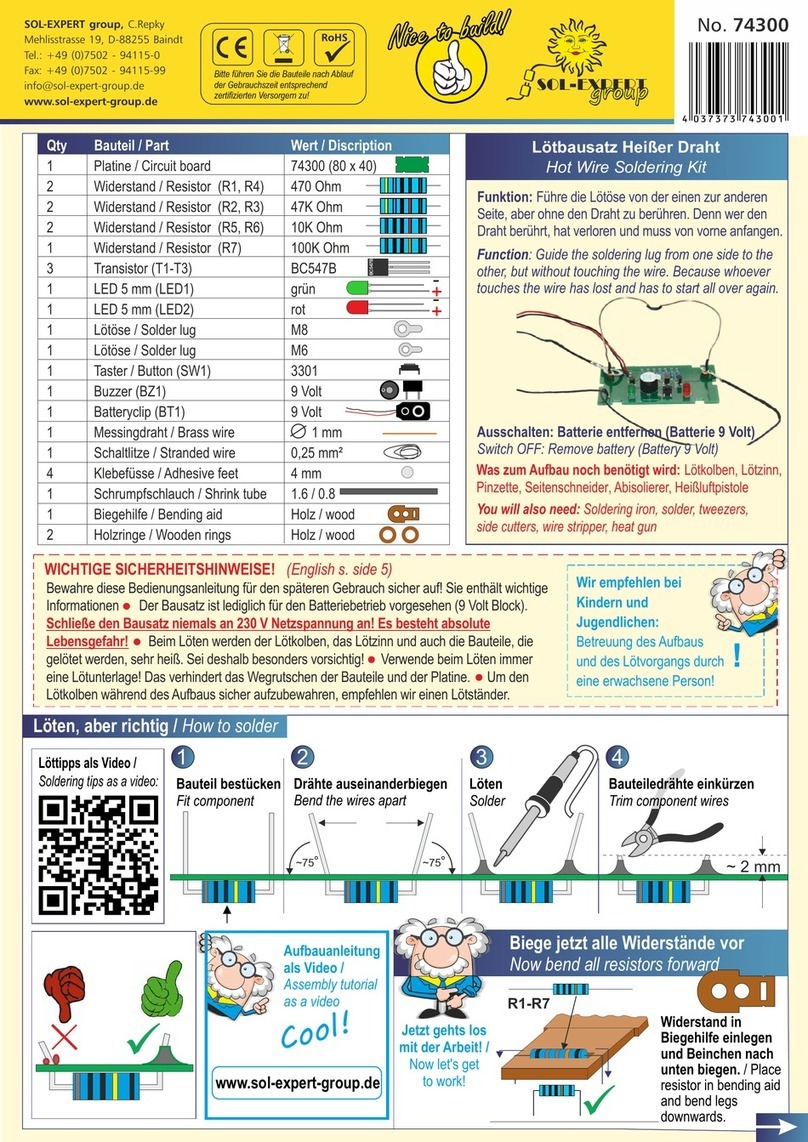
Sol-Expert
Sol-Expert 74300 quick start guide
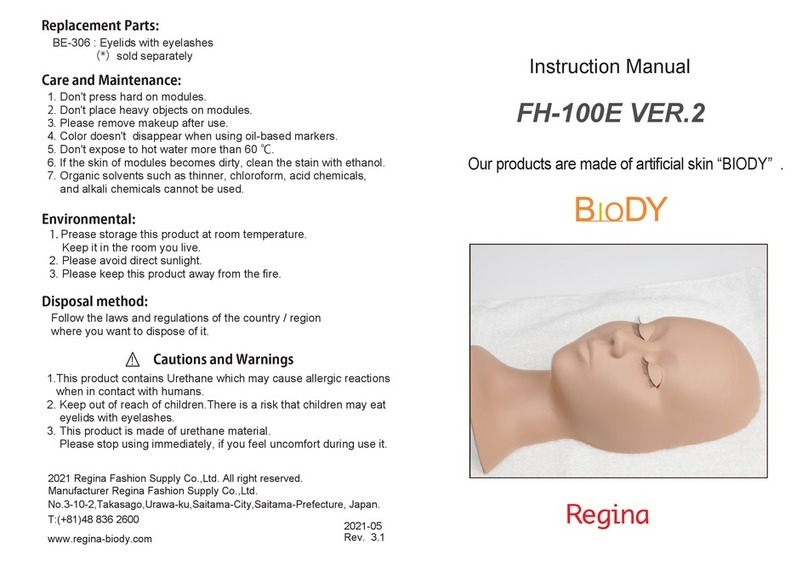
Regina
Regina FH-100E VER.2 instruction manual
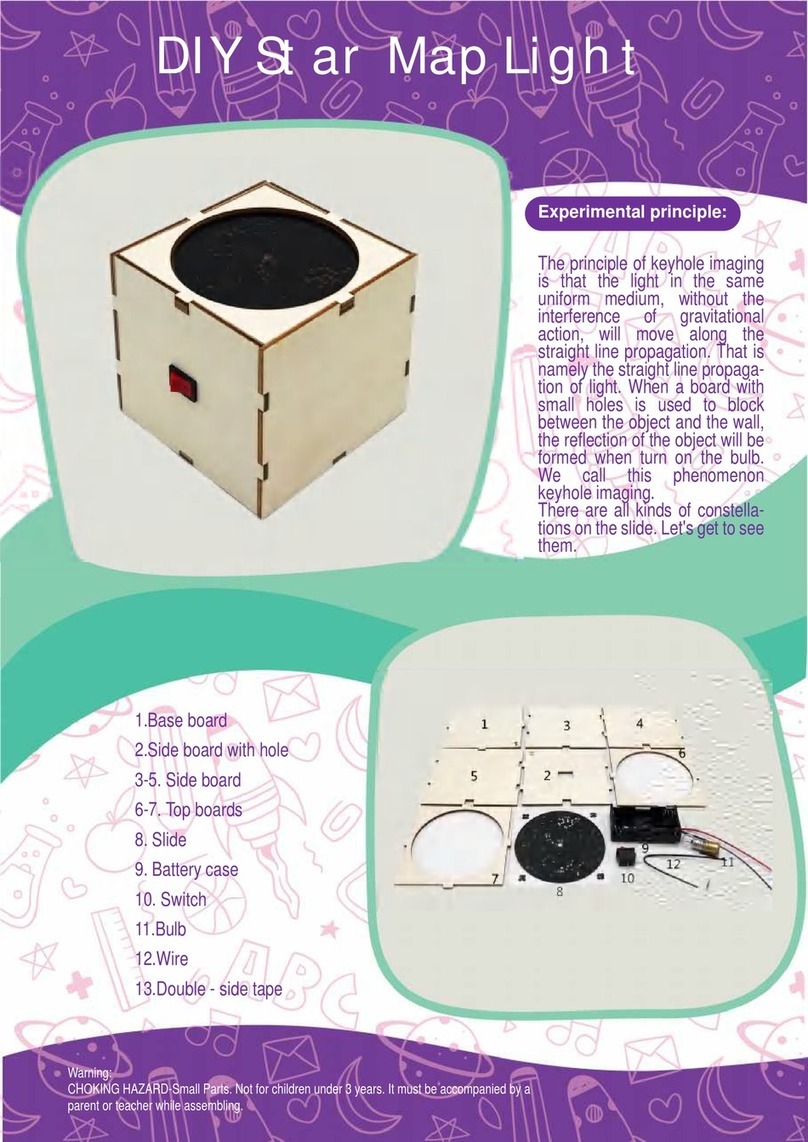
Pakronics
Pakronics PAKR-A0471 quick start guide
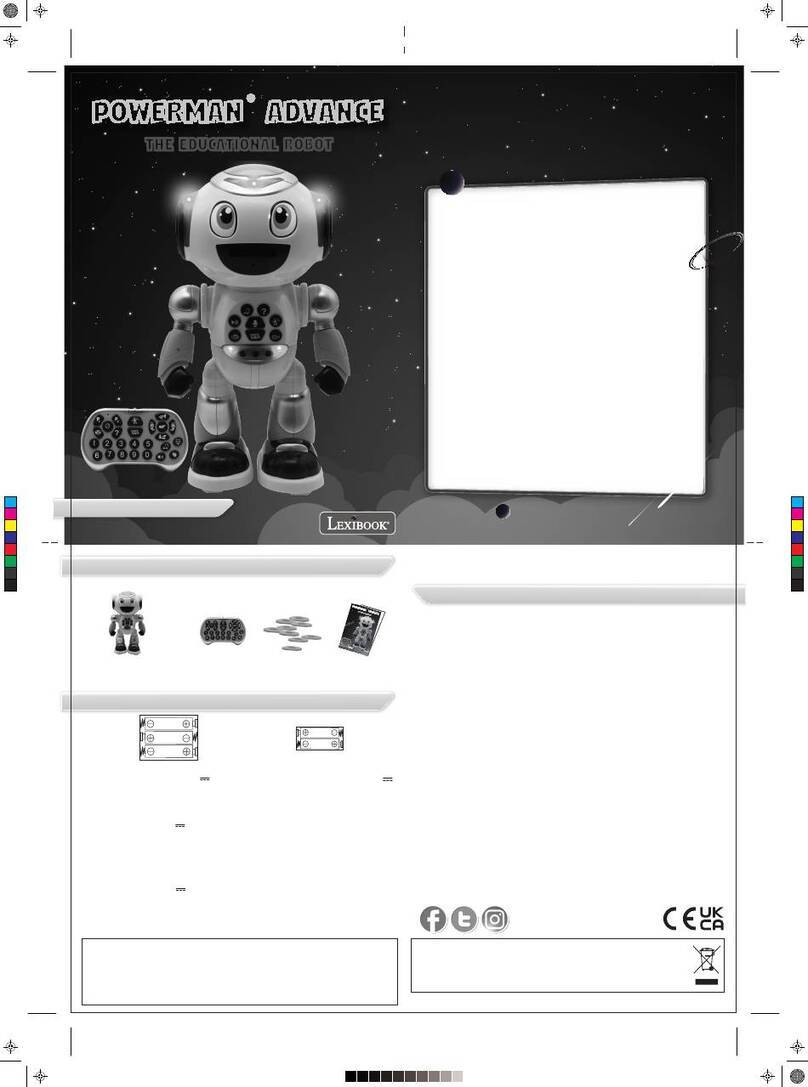
LEXIBOOK
LEXIBOOK POWERMAN ADVANCE ROB28EN instruction manual
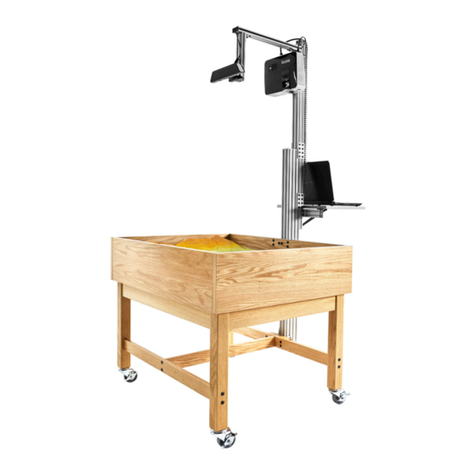
DIVERSIFIED WOODCRAFTS
DIVERSIFIED WOODCRAFTS AUGMENTED REALITY Series manual

Nasco Healthcare
Nasco Healthcare SANI-MAN instruction manual

Festo
Festo EduTrainer 571814 operating instructions

Imagineering Clubs
Imagineering Clubs MORSE KEY & BUZZER Mk 2 instructions

laerdal
laerdal MamaNatalie Directions for use
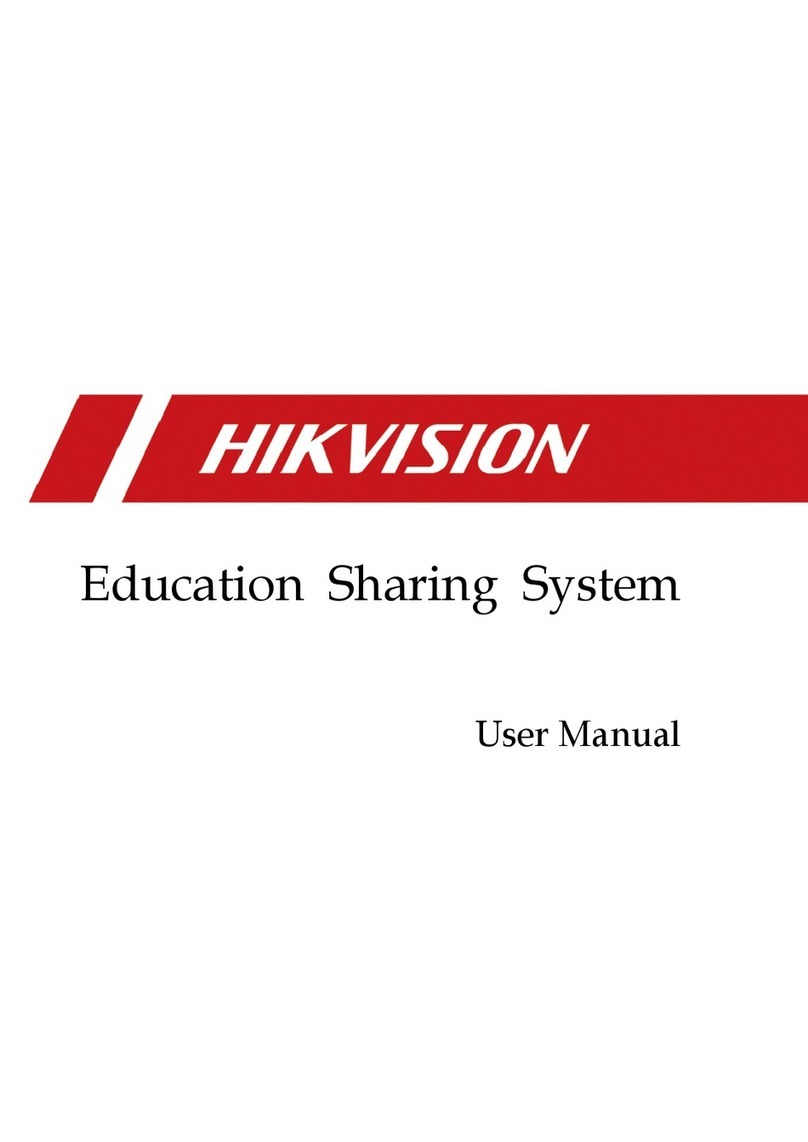
HIK VISION
HIK VISION DS-9604LNI-V/B12 user manual

Kemo Electronic
Kemo Electronic G027 user manual


